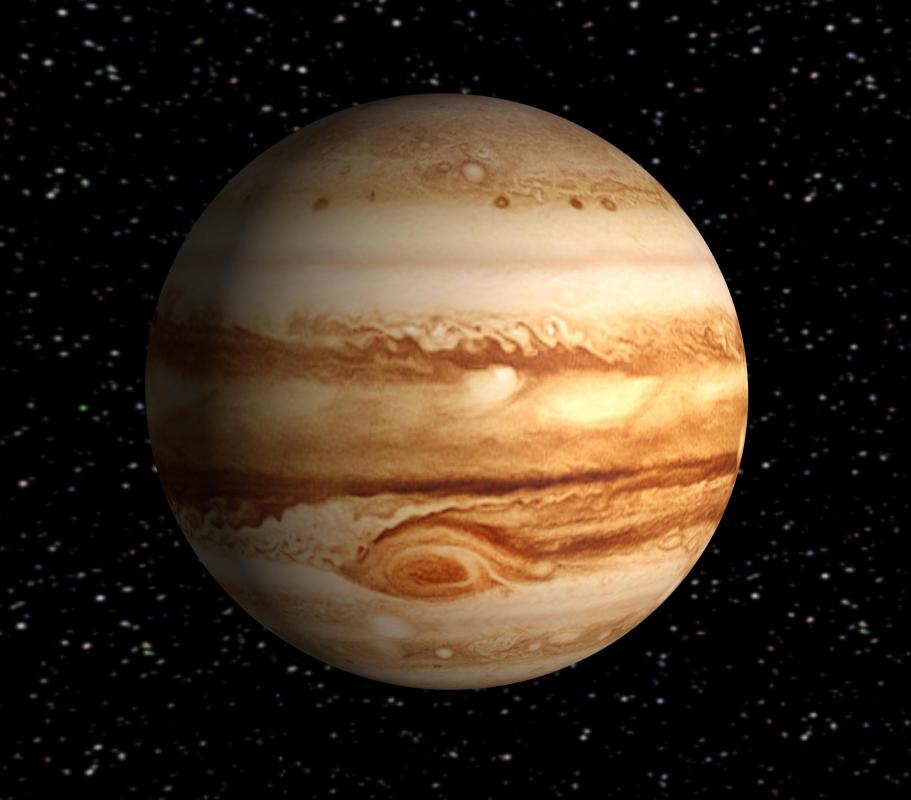At WiseGEEK, we're committed to delivering accurate, trustworthy information. Our expert-authored content is rigorously fact-checked and sourced from credible authorities. Discover how we uphold the highest standards in providing you with reliable knowledge.
What is a Solar System?
A solar system is defined as the collection of planets and other heavenly bodies — such as asteroids, comets, and meteors — that orbit a central star. Most of the time when we speak of a solar system, we are speaking of the one of which Earth is a part: the group of planets and other heavenly bodies that orbit the star we call the Sun.
In our solar system, the heavenly bodies that surround the sun and are held by its gravity include dwarf planets and natural satellites, as well as asteroids, comets, and meteors. It is now considered that there are eight planets, which in order from the sun outwards are Mercury, Venus, Earth, Mars, Jupiter, Saturn, Uranus, and Neptune. Though considered a planet for many years, Pluto was reclassified in 2006, and is now called a dwarf planet.
Planets are now defined by the International Astronomical Union by several criteria. To be considered a planet, a heavenly body must:
- not be a star
- orbit a star
- have sufficient mass to be nearly spherical
- have cleared its orbit of other objects

The planets in our solar system have much in common: they all rotate on their axis as they revolve around the sun in the same direction. Nevertheless, the planets in our system have different physical properties, and based on these properties and their arrangement in space, they are commonly grouped into the inner planets and the Jovian planets. Jove is an alternative name for the god Jupiter.

The inner planets of our solar system — those nearest the sun—are Mercury, Venus, Mars, and Earth. These planets are smaller and denser, with solid crusts and molten interiors. Three of the four — all except Mercury — have a gaseous atmosphere. The Jovian planets are larger and less dense, with thick atmospheres.
The sun’s gravitational pull is responsible for the elliptical orbits of the planets in our solar system. Johannes Kepler first described planetary motion accurately in the early 1600’s. It was Isaac Newton who demonstrated that Kepler’s laws of planetary motion applied to other heavenly bodies in the solar system and were the result of the sun’s gravitational force.
AS FEATURED ON:
AS FEATURED ON:


















Discussion Comments
@Amphibious54- Scientists have actually been able to capture other solar systems in pictures form both ground based and space based telescopes. I do not know if they are similar to ours, but I do know that there have been recent discoveries of gas giants surrounding different stars.
This is an amazing breakthrough in deep space science because the only means of detecting planets outside of our solar system was through indirect observations of the wobble of stars and changes in light intensity. Previously, astronomers would assume there were planets orbiting stars because they claimed the wobble of a star over time was due to the gravitational pull of the planets that circle it.
This discovery only gives more evidence that life is common and not an anomaly. Maybe we are not alone after all.
I wonder if there are other solar systems similar enough to ours that have the right conditions for life. I have seen a number of shows that try to postulate on what alien life forms would look like, and whether they are as advanced as life on earth, or even more so. With the billions of stars and billions of galaxies that exist, I would think that there must be other life forms in the universe. Statistically, one could probably almost guarantee that there is other life out there. The only problem is that no one will ever know within our lifetime.
I remember making the solar systems projects as a kid for science class. We would use wire racks, foam balls and paint to make our rendition of the solar system, and then bring them home to hang in our rooms. I almost feel like schools do not do things like that anymore and the result is fewer kids interested in science.
Learning about the solar system in elementary school was one of the highlights of my early school years. I had books on astronomy, and was fascinated by constellations. I will have to make sure that my daughter does projects like this to learn about otherworldly things.
Post your comments